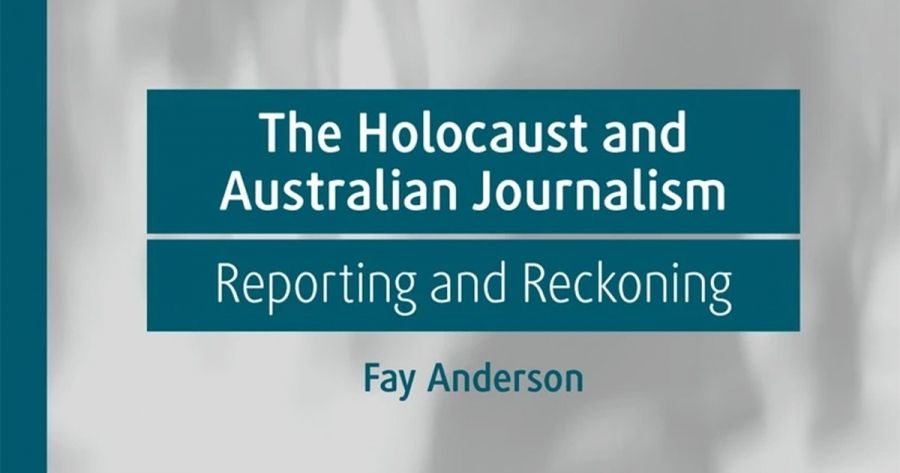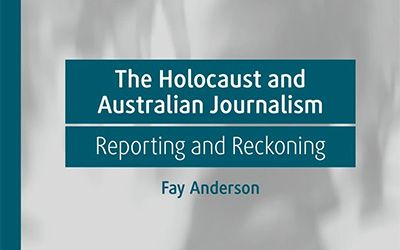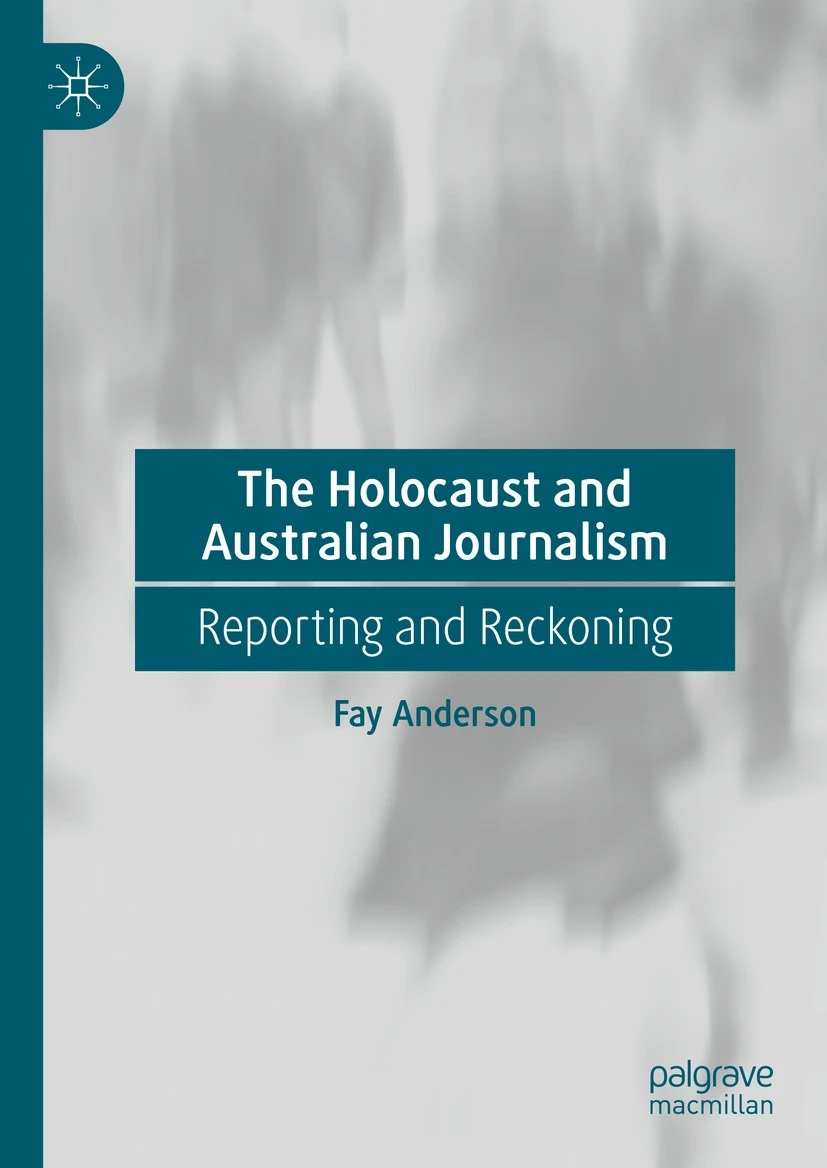
- Free Article: No
- Contents Category: Journalism
- Review Article: Yes
- Article Title: Bury the evidence
- Article Subtitle: How the Holocaust was reported in the Australian press
- Online Only: No
- Custom Highlight Text:
‘The Nazis are coming, Hurrah! Hurrah!’ wrote an excited young journalist, Ronald Selkirk Panton, to his parents the same month that Adolf Hitler was elected chancellor of Germany, the same month that Dachau was created, and the same year that the racial laws against Jews and other minority groups were enacted. Panton was one of a small but enthusiastic cohort of Australian journalists who went to Europe and filed stories about the Nazi dictatorship and the persecution of Jews. Most did not share Panton’s admiration for Hitler. Indeed, as Wilfred Burchett, one of the more political among them, later recalled, he found journalism about Hitler and Nazism elusive in Australia, amid ‘horrifying distortions’ of Hitler as a ‘man of peace’.
- Featured Image (400px * 250px):

- Alt Tag (Featured Image): Ruth Balint reviews ‘The Holocaust and Australian Journalism: Reporting and reckoning’ by Fay Anderson
- Book 1 Title: The Holocaust and Australian Journalism
- Book 1 Subtitle: Reporting and reckoning
- Book 1 Biblio: Palgrave Macmillan, €99.99 hb, 326 pp
- Book 1 Cover Small (400 x 600):

- Book 1 Cover (800 x 1200):

- Book 1 Readings Link: https://www.readings.com.au/product/9783031188916/9783031188916#rac:jokjjzr6ly9m
Australia’s newspapers – described sixty years ago by Henry Mayer as the ‘dullest in the world’ – showed little interest in any-thing outside local affairs in the decades prior to World War II. Foreign news stories occupied less than half the news space that sport commanded (which nowadays isn’t as strange as it sounds), and Australian newspapers tended to treat Hitler with derision, ambivalence, or just plain indifference. Few reported on the rise of Nazism with any seriousness, with the notable exception of the Australian Jewish Herald. This ensured that even the most conscientious reader would have had little grasp of what was unfolding in Europe.
When it came to the question of Jewish refugees, opinions were much more forthcoming. Negative reports warning of a Jewish invasion regularly featured in the more nationalist tabloids, finding a ready audience among Australians committed to the project of a White Australia. Some editors and journalists took a strong moral stance in response. John Waters of the Courier-Mail, and Hugh McClure Smith of The Sydney Morning Herald, for example, demanded that the government do more to relax its stringent immigration restrictions against Jewish refugees as the Nazi persecution escalated.
Journalism in the pre-war period was a trade rather than a vocation. Many started out as copy boys or teenage cadets, then rose through the precarious ranks of a volatile industry (Geoff Blunden, for example, started out in the mailroom at the Melbourne Herald.) The mid-century newspaper office has become a tantalising set for recent offerings by television networks: the iconic man’s world, the air thick with cigarette smoke, male bravado and three-day growths. Few women gained entry, although New Zealand-born Elizabeth Riddell did. Along with Ann Matheson for the Australian Women’s Weekly, and Betty Wilson, an SMH correspondent, Riddell spent the war years in Fleet Street reporting for the Daily Mirror.
London was the destination for determined young journalists who wanted to make their mark: Alan Moorehead, Noel Monks, Geoff Blunden, and Ronald Monson all went overseas via London to encounter war and genocide, cutting their teeth reporting on the bloodiest conflicts of their day, including the Spanish Civil War, or the Second Sino-Japanese War. Meanwhile, the rabidly anti-Semitic Panton manoeuvred his way into a position in Berlin as a stringer for the Daily Express, and even managed to meet Hitler at the 1937 Nuremberg Conference. ‘Strangely enough he has one of the most pleasant faces, friendliest faces, I have ever seen,’ he wrote to his parents. ‘You’ll think I’ve gone all Hitler, but actually it is certainly one of the high points of my life.’
Kristallnacht, momentarily at least, propelled the reality of Germany’s escalating terror against its Jewish population to the front pages. The vandalism of Jewish shops and businesses, the mass round-ups and incarceration in concentration camps, the torching of 267 synagogues, the arrests of more than 30,000 Jews, and the murder of 1,000 gave an Australian audience their first real exposure to the extent of Nazi persecution. November 9 was denounced as a ‘day of terror for the Jews’, though as Anderson points out, there had been plenty of evidence of mass arrests, deportations, and images of Jewish humiliation available at least since 1933, usually relegated to the back pages, if published at all.
After World War II broke out, the Australian media continued to give minor attention to the Jewish experience. Germany barred Western journalists from the occupied territories in the East, ensuring that its extermination campaign could occur away from the international gaze. But in late June 1942, the London-based Polish government-in-exile printed the ‘Bund report’, which documented the murder of 700,000 Jews. The report confirmed that the atrocities were not isolated events but part of a concerted program of extermination. It also confirmed the existence of the gas chambers. Three weeks later, Australian mastheads published the findings.
From that moment, the reality of the liquidation of Europe’s Jews was unambiguous – or should have been. Anderson’s main argument is that there was enough evidence, since at least 1933, to counter persistent denials in 1945 of any knowledge about Jewish persecution and annihilation. Instead, many Australian media outlets preferred to bury the evidence, shuffling it to their back pages, obscuring the Jewish identity of the victims or the survivors, or, after the war, questioning their trauma. But not all: Anderson’s careful research finds a number of examples where respectable Australian journalists reported the extent of the genocide, and editors published it. (The only complaint I have about this book is that it is so well researched, it is difficult some-times to see the forest for the trees.)
Whatever robustness occurred in Australia’s coverage in the later years of the war quickly disappeared in its aftermath. A pattern of ambivalence and forgetting developed, justifying the political inaction of the Chifley government and discrimination against Jewish refugees, while at the same time allowing hundreds of war criminals and collaborators free and safe entry.
A special focus of Anderson’s is the use of images in the media, a subject she has given considerable attention to in a previous book, Shooting the Picture: Press photography in Australia (2016). Ultimately, it was photographs, not words, that exposed the full horror of the Holocaust to the world. The now iconic photographs taken by George Rodger at Bergen-Belsen, and those at Buchenwald by Margaret Bourke-White, became etched in popular memory. Graphic liberation images also appeared in print in Australia, after some delay and not necessarily on the front pages. As Anderson shows, the atrocity images of the camps’ liberation tested the limits of editorial responsibility and even the more respectable mastheads were not properly up to the task.
It has become a recognised trait of today’s media to nod to the 1930s as a lesson in what might happen should the international community ignore the rise of violent fascism, or white supremacy, or race-based persecution, or Holocaust denial. Historians such as Saul Friedlander (upon whose work Anderson relies) have explained that the Holocaust was the culmination of historical causes that are documentable and explainable. This is exactly what certain journalists were doing years before the Holocaust, even if their reports didn’t always make the front page.
The Holocaust and Australian Journalism encourages us to consider the role of the media in reporting persecution, violence, and demagogues, but it also challenges us to be more critical about information and disinformation, and to beware of the politics of the mob.


Comments powered by CComment